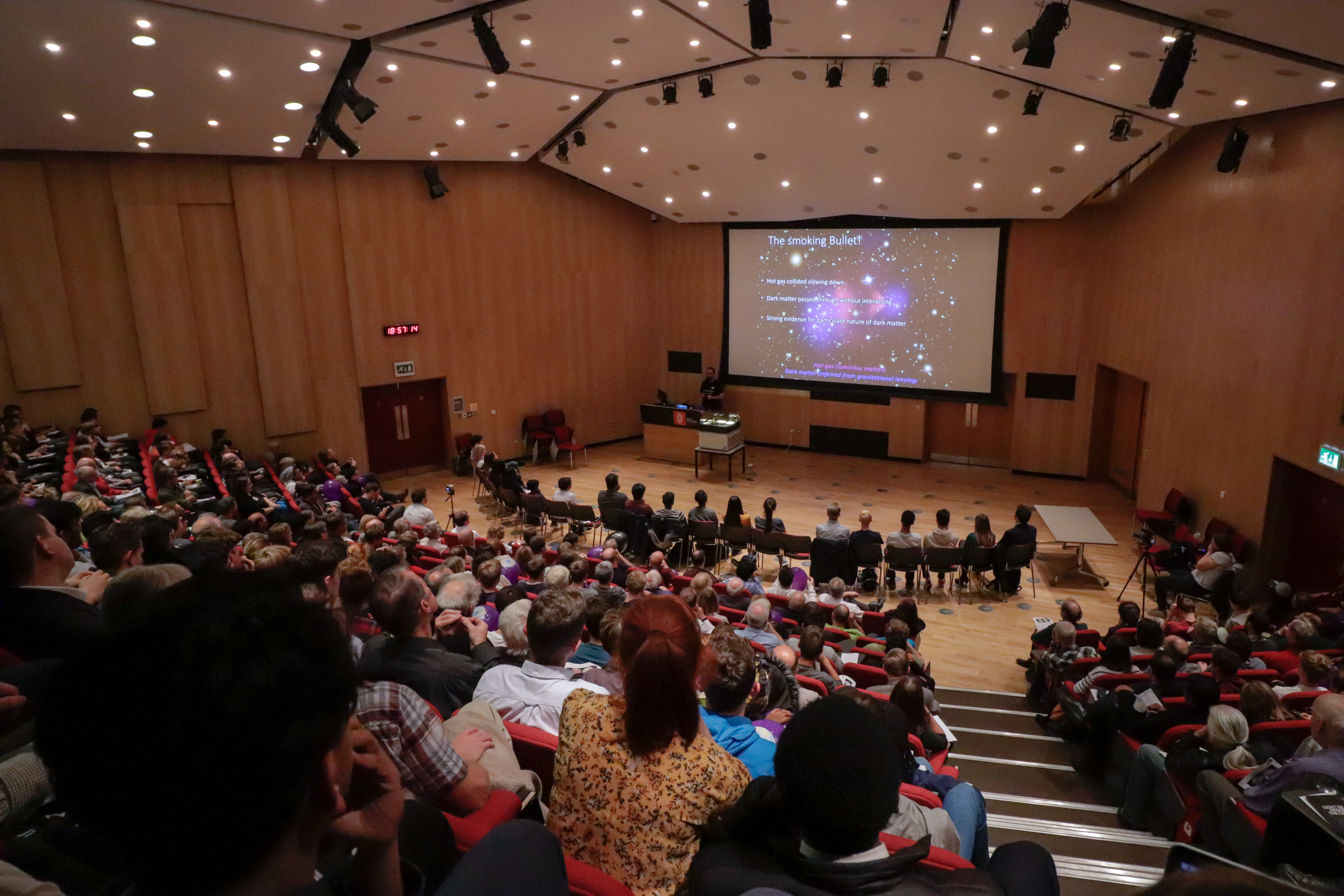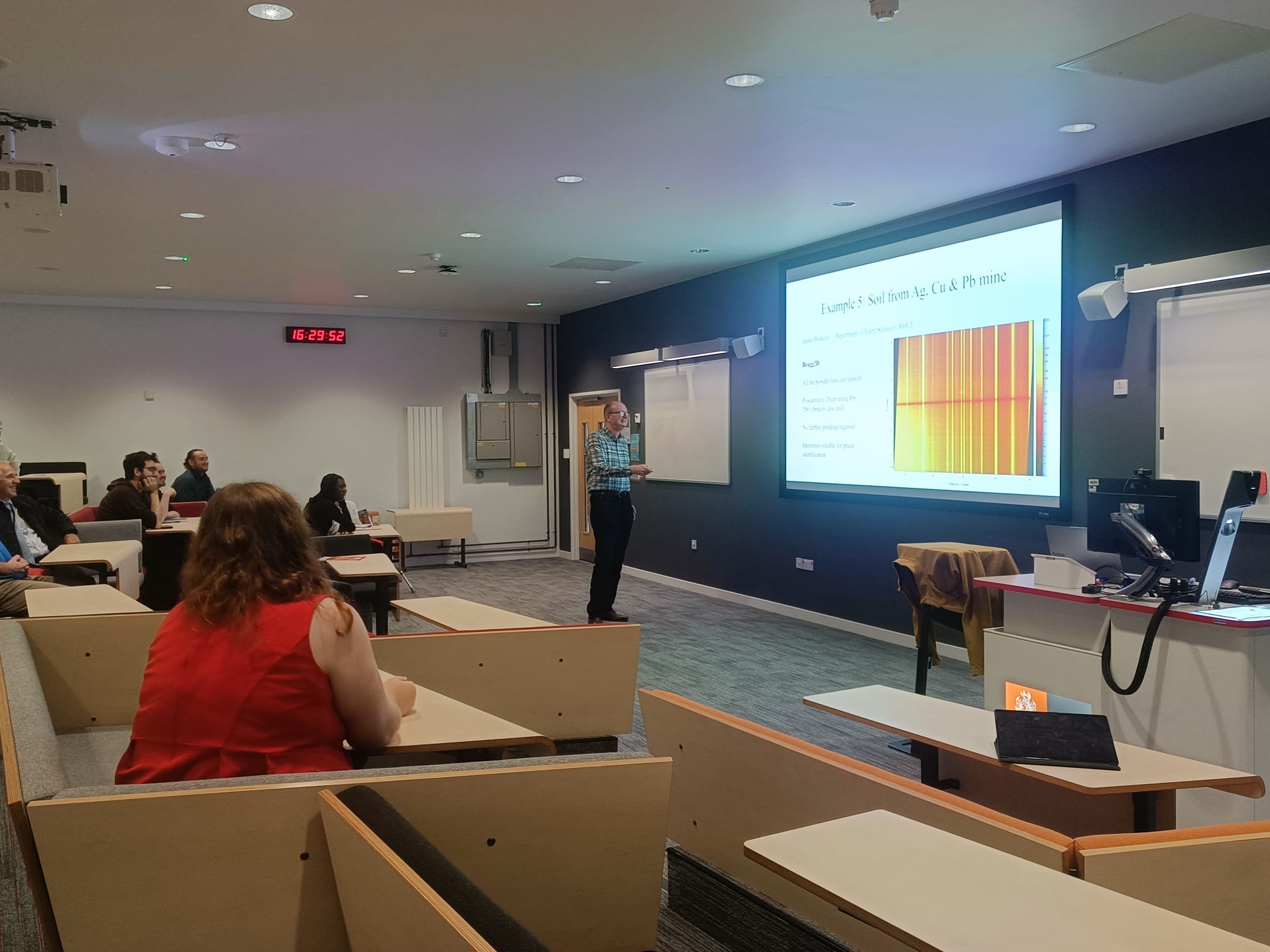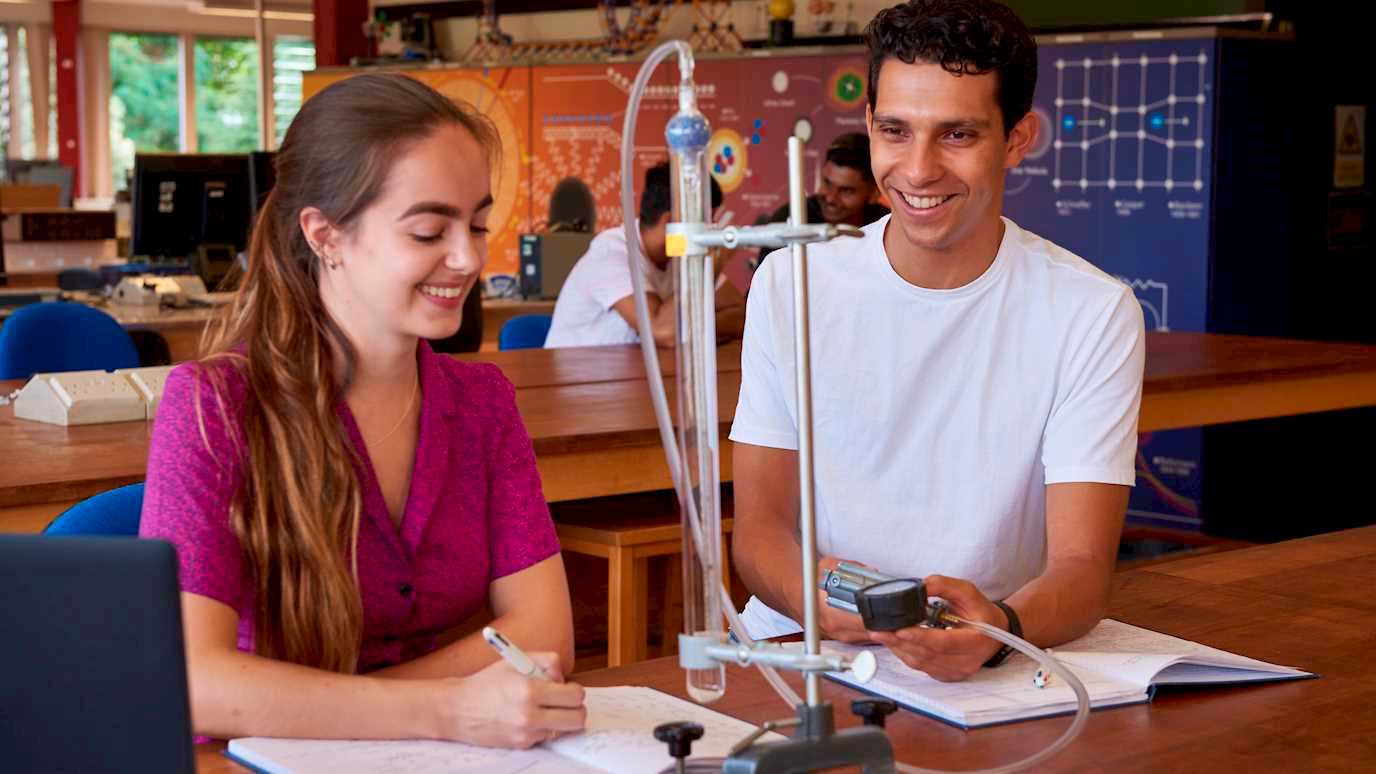Why are we afraid of the Dark? Perhaps it is the inane fear of the unknown? The unknown is something that physicists delve into on a day to day basis, but the Dark is causing physicists a problem. Dr Joseph Walding attempts to shine some light on the unknown at one of the Department of Physics Public Lecture Series: the illusive Dark Matter!

Packed Windsor lecture theatre listening to Dr Joe Walding talking about WIMP dark matter
Why are we afraid of the Dark? Perhaps it is the inane fear of the unknown? The unknown is something that physicists delve into on a day to day basis, but the Dark is causing physicists a problem. Dr Joseph Walding attempts to shine some light on the unknown at one of the Department of Physics Public Lecture Series: the illusive Dark Matter!
Through a series of bangs, exciting experiments and huge charisma, Walding lead the audience through a brief history of the universe: from the beginning to today! Starting with the Cosmic Microwave Background (CMB) Radiation, Walding explained the rapid inflation of the Universe with balloons. When fully inflated we could see an image of the CMB: photons that have travelled through space since the Universe became transparent after inflation.
Moving on to Dark Matter itself, Walding explored the initial hypothesis of Dark Matter by Swiss physicist Fritz Zwicky. By observing galaxies, Zwicky noticed that they seemed to be less luminous than their mass would suggest they should be; there must be some ‘dark’ matter within the galaxy that we cannot see. This was further evidenced by Vera Ruben who studied rotational velocity curves of stars in spiral galaxies. Ruben saw that the velocity of the stars did not drop off as the radius from the centre increased. Is there some extra mass, or do we not understand gravity correctly? Dr Walding assures us that we must have Dark Matter, by explaining his ‘smoking gun’: the Bullet Cluster. The Bullet Cluster is formed from two colliding clusters of galaxies, and the collision pattern of these shows that we need Dark Matter to explain what we see in the Universe!
So how much Dark Matter is there, and what is it? In his own words Dr Walding says simply “we don’t know!”. We have a model of all fundamental particles in the Universe that have been detected, but this does not contain a Dark Matter candidate. Walding and other Dark Matter Physicists are reaching into the unknown, searching for a particle never seen before! However, Walding explains that we do have some idea about how much Dark Matter there is. In the lecture theatre, the density of Dark Matter is approximately 0.3 GeV per cubic centimetre which amounts to approximately one Dark Matter particle per a coffee cup sized area!
How do we find something that is so Dark, and such low density? The answer: with light, and far underground! Walding uses the analogy of watching snooker without being able to see the white ball. You can see all the other balls moving (light matter) because of some effect, so you could then infer the white ball (Dark Matter) from the effects on the other balls. This is essentially the method physicists use to try and see potential Dark Matter particles. Using a large spherical vessel that can hold 3600kg of liquid argon, physicists look for the very faint light emitted from an argon nucleus excited by a passing Dark Matter particle. This vessel is part of the DEAP experiment, which lies 2km underground in an active nickel mine in Canada to reduce background radiation effect from cosmic rays. This is the experiment that Walding himself works on: recalling his particularly stylish uniform that made him look like a ‘henchman from a Bond Film’.
Walding explains that it is known that Dark Matter is extremely abundant in the Universe, and we expect Dark Matter particles to be very weakly interacting, otherwise we would have detected one before! So DEAP concentrates on looking for a particular particle called a Weakly Interacting Massive Particle, or WIMP for short. If DEAP sees a signal does that mean we have discovered Dark Matter? Unfortunately not, physics requires verification. Another experiment must also see a similar signal with a different detection technique to verify that it is a true signal.
Dr Walding concluded with a plea, that we should not give up on the search for the unknown! Not just to find Dark Matter, but the developments we have made with technology developed in the search for the illusive particles! In final words: “stay tuned”!
























